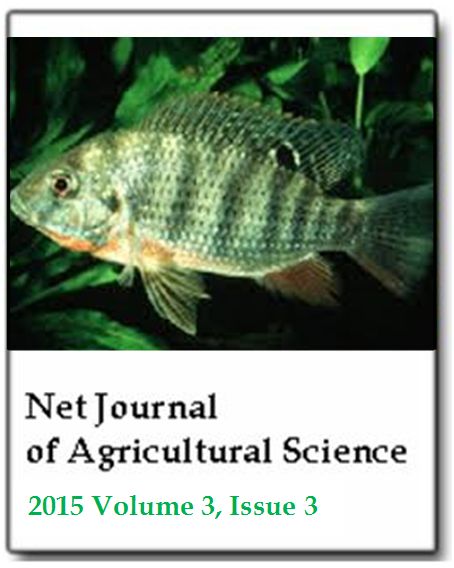Farmers’ participation in savings and credit cooperative societies: Mean per capita annual farm income and poverty reduction in Niger State, Nigeria
Abel Gomina and Faiva Ayuba NgariNet Journal of Agricultural Science
Published: July 13 2015
Volume 3, Issue 3
Pages 68-73
Abstract
The study assessed Farmers’ Participation in Savings and Credit Cooperative Societies: Mean per capita annual farm income and Poverty Reduction in Niger State, Nigeria. Combinations of purposive and random sampling techniques were used to select 85 and 72 beneficiaries and non-beneficiaries of saving and credit cooperative societies (SACCOS). Data were obtained through a well structured questionnaire. Foster-Greer-Thorbecke (FGT) poverty measures and multiple regression models were employed for data analysis. The result indicates that out of eight (8) variables included in the regression, only age had a negative coefficient and statistically not significant. Gender, secondary occupation, household size, educational level, farm income, non-farm income, interest rate charged had positively influenced farmers’ participation in Savings and Credit Cooperative Societies in the study area. Household size, farm income, non-farm income, interest rate charged and educational level are statistically significant at 1 and 10% levels of significance respectively. The study further revealed that about 33 and 67% of the beneficiaries and about 8 and 18% of the non-beneficiaries fall under the non-poor category before and after obtaining credit respectively. Poverty is marginally severe among the beneficiaries and non-beneficiaries but is more marginally severe among the non-beneficiaries. The study recommends that Non-governmental Organisation and local government council in the areas should intensify their efforts to boost the income diversification practices of farmers through provision of infrastructure especially feeder roads. This could enhance the level of farm and non-farm activities that could generate more income for the household and thereby help to combat poverty among the respondents.
Keywords: Savings, random sampling techniques, gender, educational level, infrastructure.
Full Text PDF
